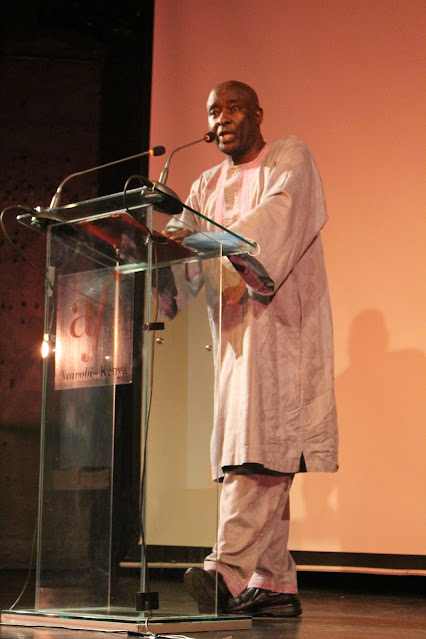GOVERNMENT
SUPPORTS VISUAL ARTISTS BIG TIME
By
Margaretta wa Gacheru
For the very
first time, the Kenya government has allocated millions from its Sports, Art,
and Social Development Fund to visual artists participating in the Emerging
Visual Artists Symposium and Exhibition currently underway at Karen Village.
The program,
which Department of Culture Director Dr. Kiprop Lagat says was initiated by the
government, also includes a 10-day residency for 40 so-called ‘emerging
artists’. As he officially opened the residency and symposium last Thursday, Dr
Lagat noted the Fund was created by Parliament back in 2003 but it had barely been
used until now.
“After the
residency, artists’ works will be curated by Lydia Galavu of Nairobi National
Museum where the best will be exhibited from July 8th to August 8th
at the Museum under the title ‘Renaissance of a Vision’,” says Ndekere Mwaura,
Chairman of the Kenya National Exhibitions Organizing Committee.
He further noted
that the call to visual artists to apply for the program went out over social
media in early May of this year.
“Well over
80 artists applied, but we had to hone it down to 40, not necessarily because
those not selected weren’t talented,” says Ndekere. “It had to do with
balancing a number of criteria. We wanted as many counties represented as
possible [there are 11]. We wanted a gender balance, And we also wanted to
balance genres of art since we defined several categories, including painting
and sculpture as well as mixed media, mosaic, beadwork and jewelry,” he added.
The artists
will also have opportunities during the residency to meet with more established
artists who will share aspects of their experience and advice with the 40.
Among those
who will share are Ndekere who also lectures in Fine art at Kenyatta University,
plus several of his agemates like Gikonyo Maina, Etale Sukuro, Kibachi Gatu, Kangara
wa Njambi and Gerald Motondi.
Speaking to
the 40 during the Launch, Motondi, an award-winning sculptor, said, the
residency was just the beginning of a journey that is bound to take them
places. He cited numerous countries where his talent as a sculptor had taken
him, including China, South Korea, US, and various countries in Europe.
“Don’t think
participating in this residency is a small deal,” he said. “It’s a major event
for you to exhibit your art at the National Museum,’ he added.
Most of the
artists brought a sample of their work to showcase at the launch. Their diversity
of styles and skills was wide-ranging. For instance, Katanu Kai, 23, who has
already spent a year overseas in art school brought paintings that were so impressive
they shared a pride of place next to the speakers’ podium.
In contrast,
George Kamiti, 40, a former art student at Kenyatta University, shared ‘paintings’
he made from metallic ‘trash’ which he stitched together with copper wires. He
also brought ceramic beads and bead jewelry that he creates in his studio at
Art Orodha in Thika.
Stacy
Merciana, 24, on the other hand, studied painting and graphic design at
University of Nairobi. But what she brought to Karen Village were a series of
watercolors.
“I only
discovered water colors towards the end of my days at UoN, but I found I really
loved working with them,” she told DN Life and Style. “I hope I can get
advice from experienced water colorists while I am here,” she adds.
Meanwhile,
like many of the 40 selected artists, Eva Mithamo had relatively little formal
art training before coming to Karen Village. “I feel I am just starting out,”
says Eva who studied at Bobea Art School for a year before going to Sketch
Master Art College where she went for just two weeks before coming to Karen
Village. In her early 20s, Eva brought her acrylic paintings and looks forward
to honest constructive criticism for her artistical growth.
Dennis Kioko
is another artist who upcycles people’s trash. In his case, it’s glass wine
bottles which he turns into what he calls home décor. “I get lots of bottles
from local pubs as well as some from my friends,” he says.
Finally, one
young artist at the Launch who didn’t apply for the residency since she is still
a student at KU is Maria Gikuru, 25. But coming with her sketch book filled
with imaginative pen and ink caricatures, we left the ‘Renaissance of a Vision’
residency feeling that ‘emerging artists’ like these embody a bright future for
the growth of Kenya’s visual art community.























